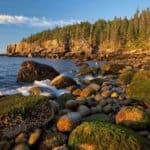

Joshua Tree National Park is a large, federally-protected area that features a unique desert landscape with a range of rock formations that have helped fuel its popularity. The park is named for the famous tree that can be found in the area, which is a slow-growing, twisted, and alien-looking tree.
The park features a range of hiking trails that take you through the massive, almost 800,000-acre park. The park encompasses portions of two different desert regions, each with its own unique landscape and habitats, making for a varied and visually-stunning journey into the wild.
Whether you are interested in hiking or just want to spend a weekend camping at one of the most unique natural sites in the country, Joshua Tree National Park is a great choice. Let’s take a deeper look into the Park itself, then look at all the information you need to plan a successful camping trip to the area.
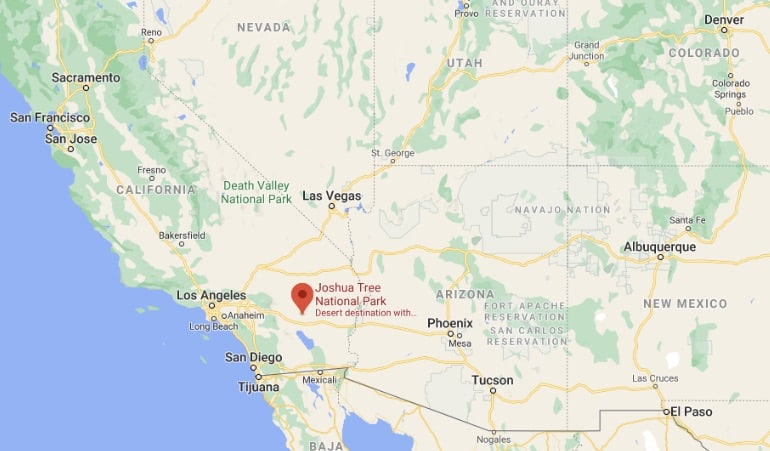
Joshua Tree National Park is located in southeastern California, near Palm Springs, California, and east of Los Angeles. The amazing thing about this park is how recently it was designated as such. It wasn’t designated a national park until 1994!
Before then, it was designated as a national monument. This change in designation provided for more protections for the unique landscape and biome encompassed within the park, helping to ensure that future generations will also be able to enjoy the stunning and unique vistas and landscapes.
Joshua Tree National Park is open to visitors year-round, but it is known to be hot and not exactly pleasant during the heat of the summer. The most popular time of year to camp in the park is February through May, so if you plan on going during this part of the season, it is highly recommended that you plan well in advance. Some campsites are reserved only during the height of the season.
The “on season” for camping runs from September through May, but camping is also allowed during the offseason, it is just quite hot so not many people want to camp at this time of year where temperatures are regularly in excess of 100 degrees Fahrenheit.
Spring is, of course, one of the most popular times to visit the park since temperatures are mild. Spring and fall temperatures average about 85 degrees, which is far more pleasant and tolerable.
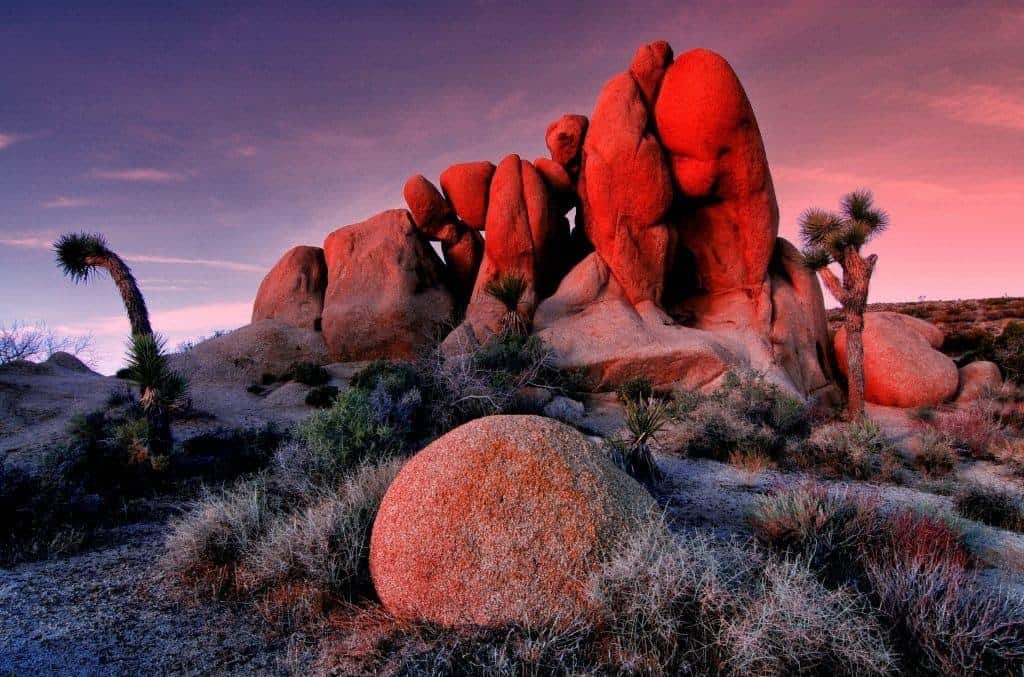
There are some 500 campsites spread throughout the vast 800,000-acre Joshua Tree National Park, so you aren’t at a loss for choice. Finding the best campground for you will depend on whether or not you plan on hiking and how long you wish to stay at the park.
There are more popular campsites that are located amidst the stunning bare rock formations and in the shadows of the Joshua trees. Let’s take a look at some of the most popular campsites in the Park.
Located on the eastern side of the park, White Tank Campground is located among bare rock formations, with a smattering of the Park’s namesake Joshua trees.
This is a small campsite that only has 15 different camping sites, but it is a great choice for those who want to have a more private outing. There is a road that leads into this campsite and small RVs are allowed.
This is the biggest campsite in Joshua Tree National Park and is located smack dab in the center of the park. As the name of the site implies, this huge campground is located amidst huge bare rock formations.
The campground has 124 different sites of varying sizes, some small enough only for a tent and others large enough for a big RV.
Indian Cove is a popular and easy to reach campground that has 101 campsites. It also features 13 group campsites, making this a good choice for larger group camping.
RVs are welcome and generators are permitted during specific hours. There is accessible water and vault toilets, but there are no electric or other hookup services.
Located near the Cottonwood Visitor Center, Cottonwood Campground is located in the amount the mountains of the southeaster deserts. The campgrounds have 62 sites and 3 set up for group camping.
As this is one of the more popular sites that features flush toilets and potable water, it is one of the busier campgrounds in the park. Reservations are recommended if you plan to visit during the busy time of the season.
Black Rock Campgrounds is a large campsite that is suitable for tent camping or RVs. It is located less than 5 miles from the nearest town, so you aren’t far from amenities.
The campground features 99 sites, however it does not offer group sites. Each campsite has its own fire ring, access to bathrooms, and potable water sources.
There is also a day-use picnic area for those who are hiking and want to take a break, but don’t plan on staying overnight.
This is a popular site for those who ride their horses on the trails and the campground has a 20-horse capacity staging area that is set up for horse care.
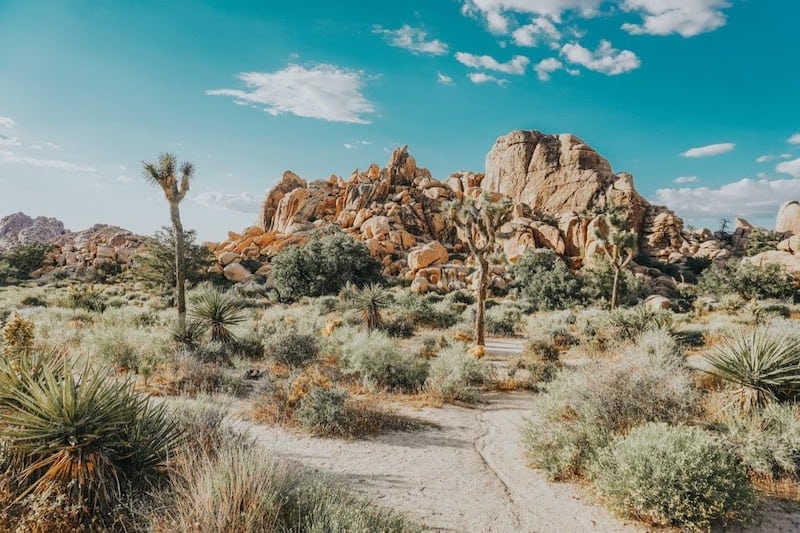
Car camping sites are sites that you can camp at that have a drive-up option, meaning you don’t have to hike to get to the campsite. There are a number of car camping sites in Joshua Tree National Park that give you road and car access to various campsites.
Belle Campground, Black Rock Campground, Cottonwood Campground, Hidden Valley Campground, Indian Cove Campground, Jumbo Rocks Campground, Ryan Campground, Sheep Pass Campground, and White Tank Campground are all car camping sites. Each site has different amenities and varying numbers of individual sites.
Backpacking refers to long hikes that often take multiple days and entail traveling tens of miles. There are a number of these types of trails in Joshua Tree National Park and when well-prepared, this is a fun, endurance-testing way to spend a weekend or more.
It should be noted that if you plan on backpacking in the park, you will need to register at the appropriate backcountry registration board. We will look at that in more detail in the next section.
There are numerous backpacking trails that range from just a few miles long to up to about 40 miles long so that you can pick one that will best suit your skill level, and the time you have available.
Popular backpacking trails in the park include:
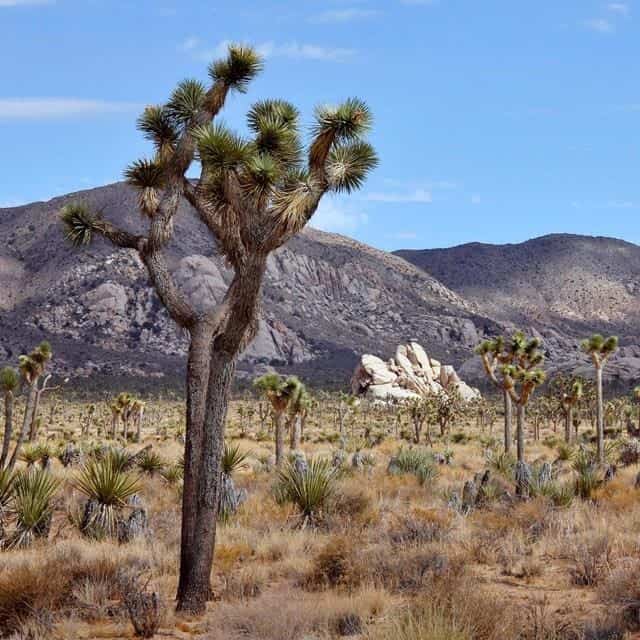
Backcountry camping refers to camping that takes place during backpacking trips or camping that takes place outside of designated campgrounds. In order to camp in the backcountry, you must register at one of the designated backcountry boards, which are located at Black Rock Canyon, Covington, Cottonwood Spring, Juniper Flats, Indian Cove, Geology Tour, Keys West, Pine City, North Entrance, Pleasant Valley, Turkey Falls, Twin Tanks, and Porcupine Wash.
Well-planned backpacking trips are a great way to enjoy private, intimate experiences in this unique landscape. There is often no access to potable water, which means you need to bring all your water and food supplies with you to ensure your safety while in the backcountry.
There are 13 “staging areas” for backcountry camping where you can leave your car and start on your journey. Backcountry camping is allowed 1 mile from any roads, 500 feet from trails or sources of water. Groups must be limited to 12 people in the wilderness areas and 25 people or fewer in the backcountry.
Campfires are only allowed within government fire rings. There is a range of rules and prohibitions that you will need to familiarize yourself with so as to keep the park clean and safe for future visitors.
Where to Stay Near Joshua Tree NP If You Can’t Find a Campsite?
Luckily, Joshua Tree National Park is such a large park, chances are you will easily be able to find an open campsite for your group. However, if all campsites are full, there are other options.
You can choose from one of the RV campgrounds or car camping sites, as well as some of the camping sites that are near, but not in Joshua Tree National Park that is maintained and operated by the Bureau of Land Management.
Where to Get Supplies?
Any of the nearby towns will offer a wide range of shops that provide for all the provisions needed for a camping trip. Twentynine Palms, Joshua Tree Village, Yucca Valley, and Indio are all towns near Joshua Tree National Park that have accommodations and places for supplies.
Can I Reserve a Campsite in Advance?
Yes, reservations can be made up to six months in advance at any of the more than 500 campsites that are available for reservation. The campgrounds are open from September through May and the busiest time of year runs from February to May, so it is best to reserve a site in advance if you are planning a trip during the busy time of year.
Navigation:
Recent Posts:
Recent Gear Reviews:

reviwedAF is an independent website created by outdoor enthusiasts. The views expressed on this site may come from individual contributors and do not necessarily reflect the view of reviewedAF or any other organization.